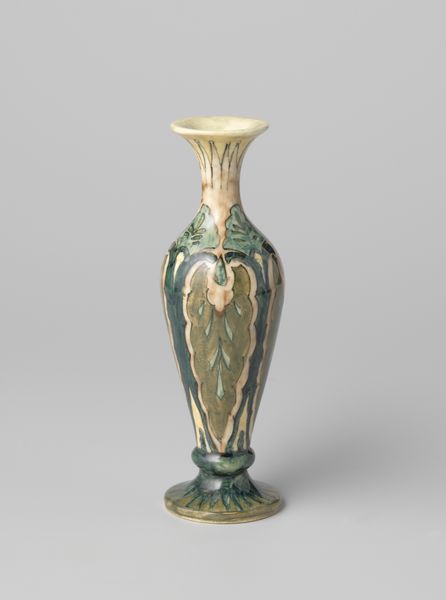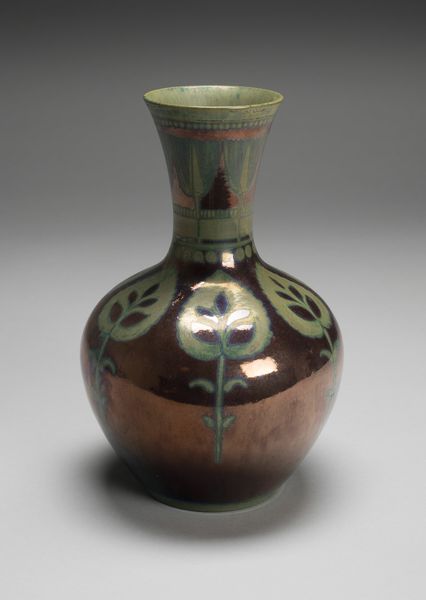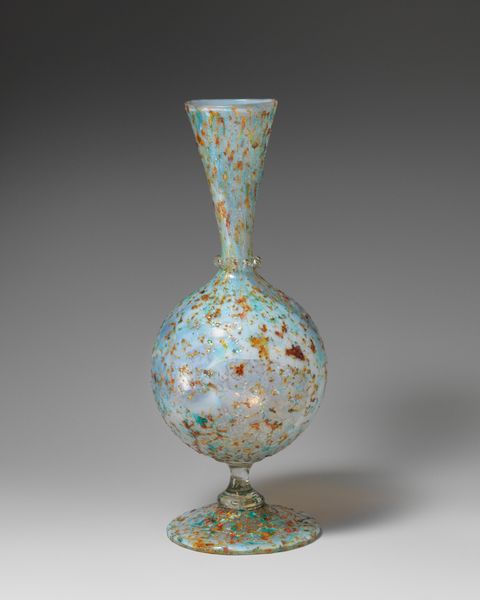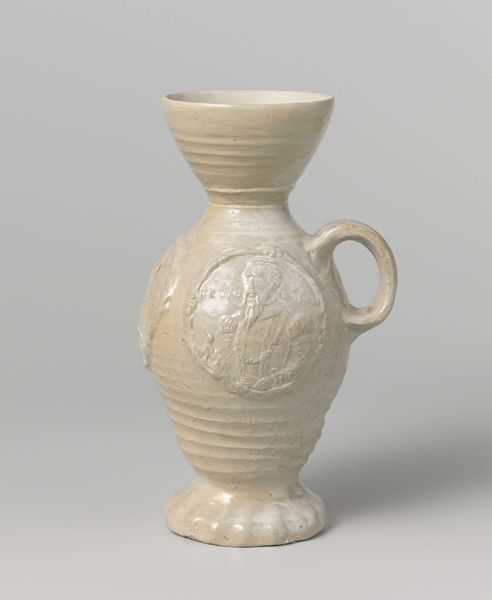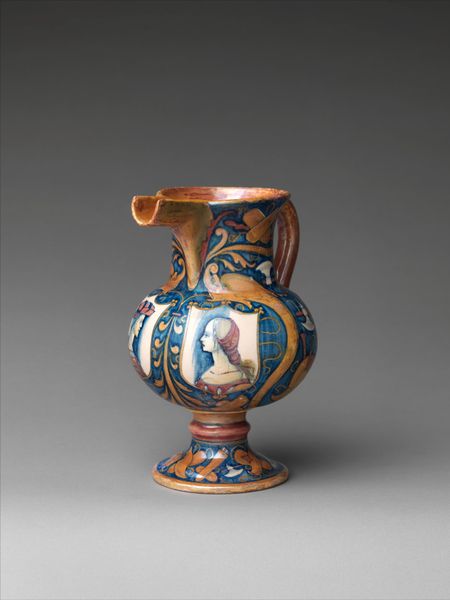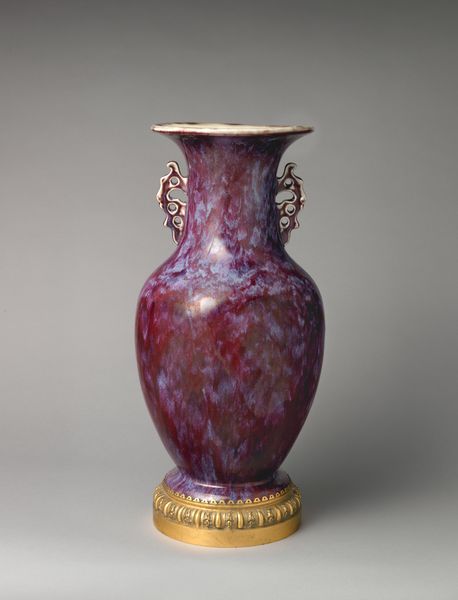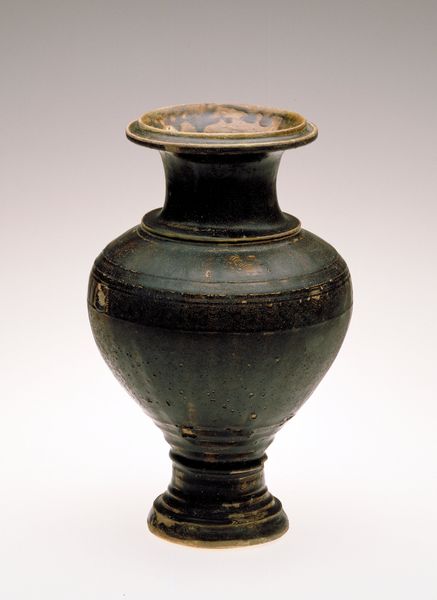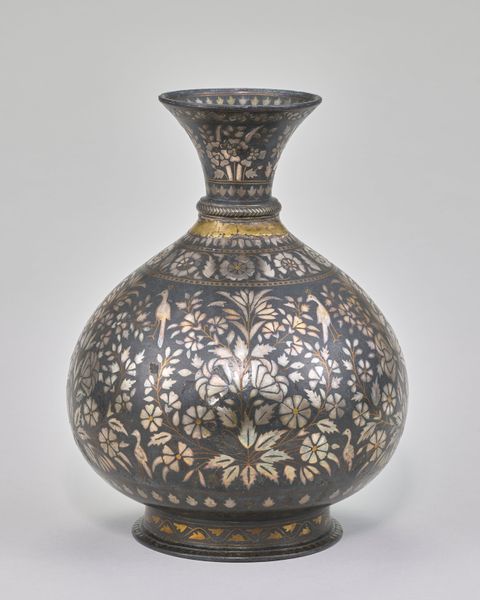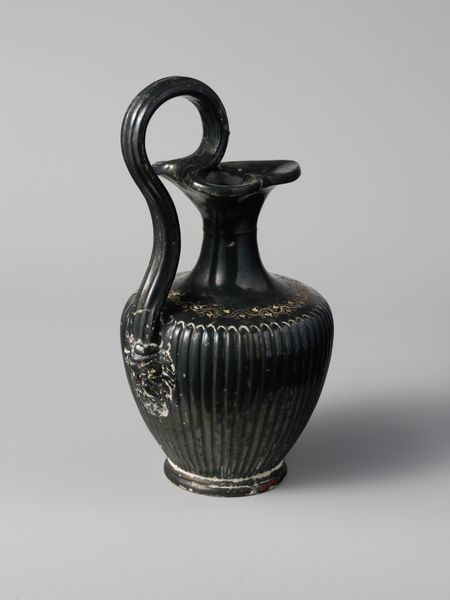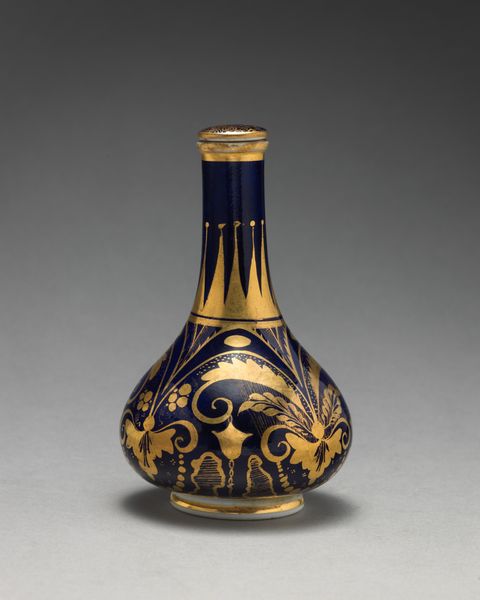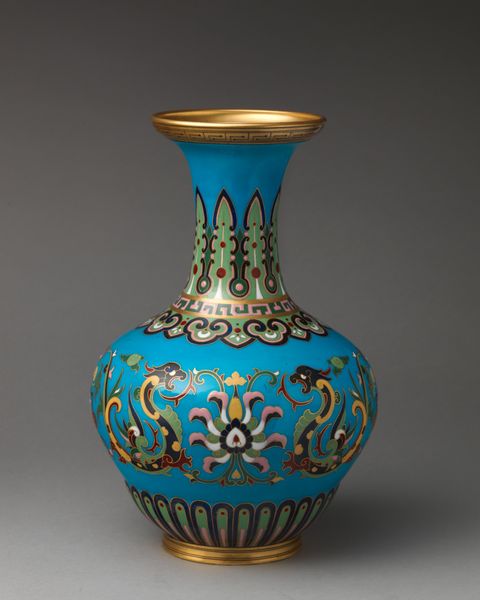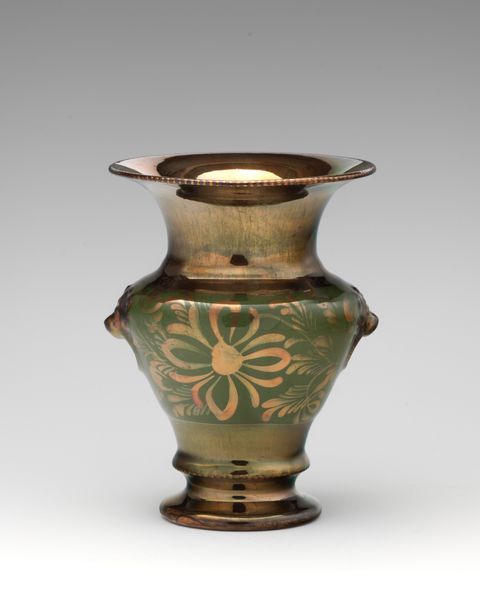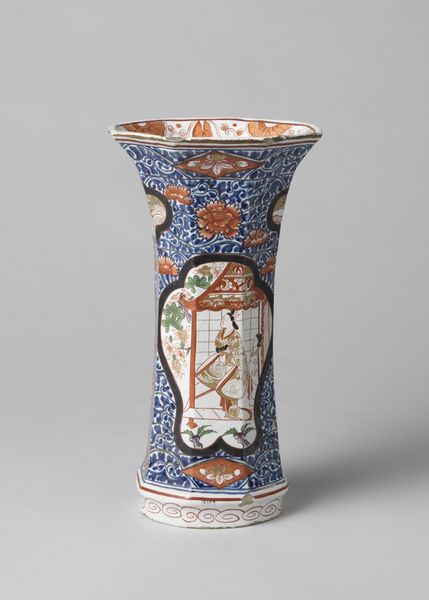
Vaas, polychroom beschilderd, met op de schouder gestileerde lelies 1895
0:00
0:00
ceramic
#
arts-&-crafts-movement
#
ceramic
#
stoneware
#
ceramic
#
decorative-art
Dimensions: height 28.7 cm, diameter 11.9 cm
Copyright: Rijks Museum: Open Domain
Editor: This vase, made around 1895 by N.V. Haagsche Plateelfabriek Rozenburg, features polychrome paint and stylized lilies. The use of ceramic stoneware is lovely. What I find really interesting is the sort of controlled chaos in the glaze - it feels both intentional and organic. What do you see in this piece? Curator: For me, this piece speaks volumes about the Arts and Crafts movement's complex relationship with industrial production. Rozenburg, despite aligning with the movement's ideals, was still a factory. Consider the labour involved: the initial forming of the stoneware, the precise application of the polychrome paints, and the firing process itself. How does the 'organic' feel you mentioned intersect with the highly structured labour required to produce it? Editor: That’s a great point. I hadn't really thought about the contrast between the artistic intent to mimic nature and the actual factory setting. The controlled chaos probably stems from the tension between handmade ideals and industrialized production, doesn't it? Curator: Exactly. The value wasn't solely placed on mass production, but on the specific skills a human would develop. What are your thoughts about the materiality of the object, like the quality or source of clay, the skill in ceramic work and the cost that was added with the polychrome finish? How would these have impacted the production numbers of similar pieces? Editor: That’s a fascinating consideration, if sourcing the material or finding the specific type of skilled labor that you mentioned was problematic, then obviously it limits production regardless of consumer demand. Now, seeing this as a produced object allows me to recognize even more its beauty and historical value. Thank you! Curator: My pleasure! Exploring the layers of production often reveals more than aesthetic appreciation alone. It adds another lens of comprehension of art objects and practices in our society.
Comments
No comments
Be the first to comment and join the conversation on the ultimate creative platform.
